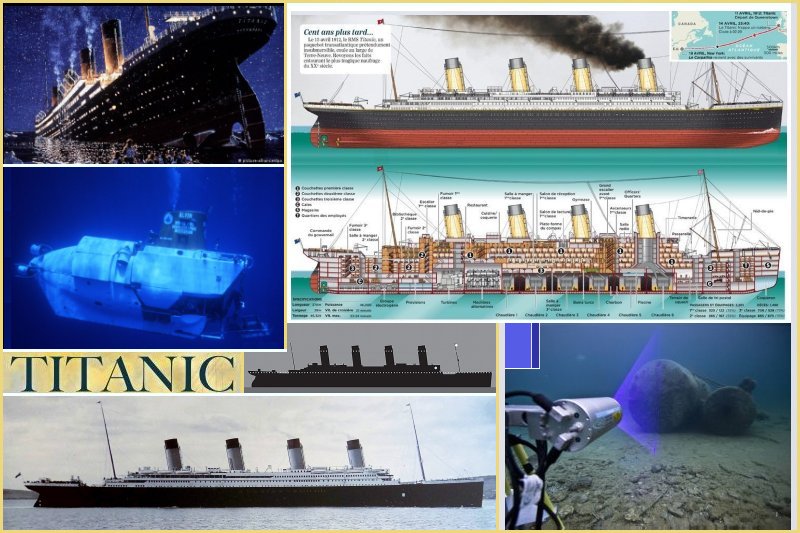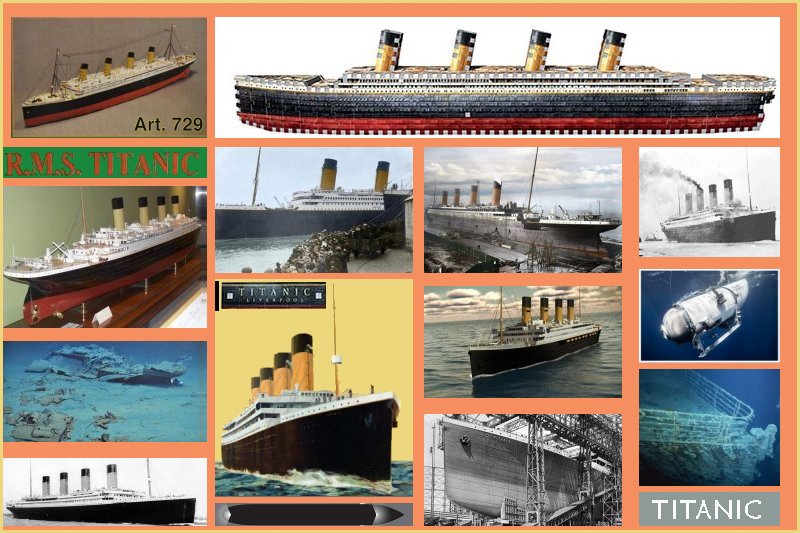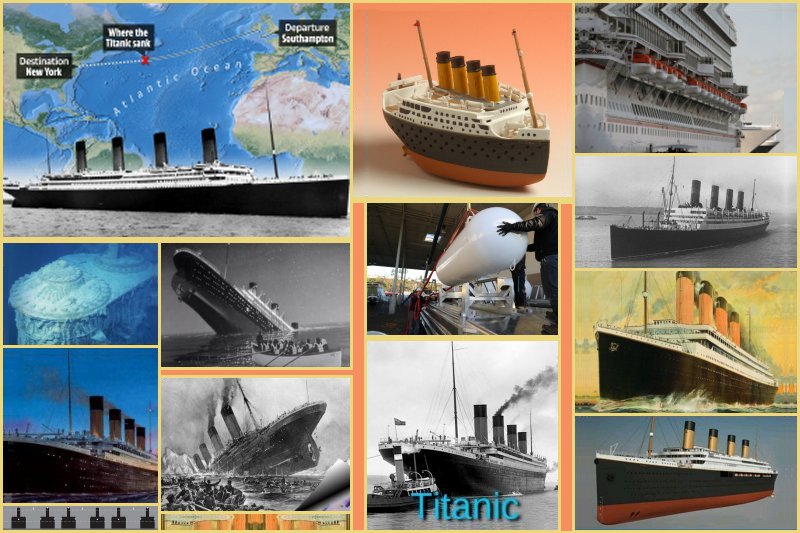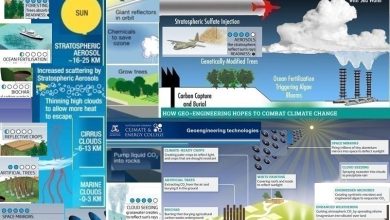
When the RMS Titanic collided with an iceberg on its maiden voyage from Southampton, United Kingdom to New York, United States and sank beneath the waters of the Atlantic Ocean, the tragedy turned into the world’s most renowned maritime disaster; however, the British steamship undeniably became the most prominent ship ever built in the United Kingdom.
International Mercantile Marine was a huge shipping trust formed in 1902 by the American John Pierpont Morgan trust. J. P. Morgan was head of a banking firm known as J. P. Morgan and Company. With finance from J. P. Morgan trust the White Star Line built three brand new British Olympic class ocean liners; the Britannic, Olympic, and Titanic. The design and size of a ship is decided by its purpose which is established at the initial stage of the building process. A Steam Ship (SS) was a seaworthy, steam-powered vessel propelled by one or more steam engines. A Royal Mail Ship (RMS) was a British ship whose company was contracted to carry the Royal Mail (the United Kingdom’s postal service mail) to foreign nations. His Majesty’s Hospital Ship (HMHS) such as the Britannic Hospital Ship was a British ocean liner and sister ship of the Olympic and Titanic Royal Mail Ships. In 1915, the Olympic was put to service as a troop ship and consequently made several solo Atlantic trips to transport Canadian and United States troops to Europe. The Brittanic was larger than the Titanic; however, it was never used as a passenger ship. Initially intended as a commercial vessel, it was refitted as a hospital ship during World War I.
Oceanography is a relatively new field of science. A marine or underwater archaeologist is a professional person responsible for discovering any type of ancient civilisation from the seabed, locate items and to carry out research about the findings which includes buildings, pottery, tools, or anything related to their way of living. Marine technology is a career that concentrates on the latest technology to collect information, perform research studies, complete expeditions in sea waters, and map the depths below; it is different from maritime careers in that the profession is not fundamental to the operation of a ship. Marine engineers are members of a ship’s crew whose main function is to operate and maintain the propulsion and other systems onboard a vessel. Formal oceanographic studies began with the H.M.S. Challenger Expedition, the first marine science expedition to collect data related to currents, marine life, ocean temperatures, and seafloor geology. Generally funded by the British, the ship was converted from a warship to a ship for scientific purposes. It took three-and-a-half years (from 1872 to 1876) to investigate deep-sea regions of all main ocean basins. The two world wars and the cold war created three eras of immediate technological development in acoustic oceanography. The improvement of acoustic methods to measure depth and variation in the ocean environment began in the second decade of the twentieth century. By the middle of the nineteen-twenties, researchers were able to identify echoes from fish. Stellwagen Bank National Marine Sanctuary in Massachusetts is a federally protected marine sanctuary located at the mouth of Massachusetts Bay, between Cape Ann and Cape Cod – it consists of more than 842 square miles of ocean. The Sanctuary is involved with shipwreck projects using technology to construct three dimensional photogrammetric models of archaeological wrecks. During the nineteen-sixties, the suggestion that the Titanic could be photographed, explored, and recorded as an archaeological site seemed impossible, but with today’s advanced technology, experimenting with methods to observe, investigate, describe, identify, and theorise about phenomena and shipwrecks such as the Titanic no longer exists in the realm of science fiction.
The deepest part of the ocean is situated in the region of the western Pacific Ocean and is known as the Challenger Deep (about 35,800 feet below sea level). In the aftermath of the Titanic’s seabed grave, suggestions to locate the passenger liner were discussed, but eventually dismissed due to the wreck being beyond the boundaries of technology at the time. Throughout the decades, the advancement of ocean technology finally offered an opportunity to locate the Titanic. Towards the end of the nineteen-seventies, Dr Robert Ballard, an American marine geologist with a Ph.D. in Geological Oceanography and William Tantum of the Titanic Historical Society began searching for the wreck. Ballard (the famous oceanographer and archaeologist) has been influential in the improvement of underwater exploration technology. On 1 September 1985, a joint American-French expedition, lead by Ballard, used an unmanned submersible known as Argo to successfully find the Titanic at about 14 000 feet below the surface of the North Atlantic Ocean. The Titanic slumbered on the floor of the Atlantic for more than seventy years before the wreckage was discovered.
A large part of oceanographic research depends upon instruments that are lowered into the water to complete several tasks. Ballard’s discovery of the wreck began an era of advanced engineering, underwater technology, and marine science that transformed ocean archeology. The following year, Ballard and his team revisited the wreckage site with newly developed technology. Argo II, a towed imaging and mapping vehicle, contained equipment such as various video cameras, acoustic sensors, and electronic still cameras. Towed sleds, such as Argo II, allow researchers to cover a huge area. Alvin and Jason (the underwater submersibles) toured around the wreckage of the Titanic to explore the ship and the debris field. The radio room of the Titanic landed on the ocean floor with the bow section. The two-and-a-half mile slow motion free-fall demolished the structure of the room, but the gear endured the fall. Overall, they were concerned about the ship’s rapid deterioration. Nearly twenty years later, Ballard and a panel of researchers returned to the wreckage site to conduct scientific analysis and to assist with NOAA studies. The latest technology showed signs of corrosion and decay of the Titanic due to metal-devouring bacteria. The NOAA’s Office for Coastal Management provides the technology, information, and management strategies used by local, state, and national organisations to address complex coastal issues. As the leading ocean agency and as per the Guidelines for Research, Exploration and Salvage of the RMS Titanic (issued under the authority of the RMS Titanic Maritime Act of 1986) NOAA has a vested interest in the proper treatment and preservation of the Titanic wreck site. The legal impact of Salvage is that a successful salvour is entitled to a reward. In agreement with Articles 13 and 14 of the International Salvage Convention of 1989, the amount of the compensation is established by a maritime court at a ‘hearing on the merits.’ Marine salvage is to recover a ship and its cargo after a shipwreck or other maritime casualty. Salvage can include re-floating a vessel, repairing a ship, or merely towing a boat. Before the radio was invented, salvage services of impeded vessels were granted to any ship in the vicinity. Nowadays, most salvage is carried out by professional salvage companies; their main responsibility is to protect the coastal environment from oil spills and other contaminants.
The marine industry is one of countless industries that use stainless steel in most of its products. The RMS Titanic was built between 1911 and 1912. It was constructed of thousands of one-inch thick steel plates and millions of steel and iron rivets. The methodology used for luxury British steamships was the latest technology at the time. In the twenty first century, ship plates were welded together with torches; however, this technology was not available in the Titanic era. At the time of the Titanic’s construction, the steamship was the most luxurious ship ever built by the White Star Line. The Harland and Wolff shipyard in Belfast, Northern Ireland had the assignment of building the Britannic, Olympic, and Titanic. No cost was spared on the Titanic. Gantries, scaffoldings and moving platforms were used to complete the labour on the Titanic; over three thousand carpenters, electricians, painters, and plumbers fitted the ship with the latest marine technology available. The ship’s design included sixteen major watertight compartments in her lower section that could easily be sealed off in the event of a punctured hull. Three bronze propellers were each operated by a separate engine. The triple-screw was powered by a combination of machinery that consisted of two enormous triple expansion reciprocating marine steam engines (a 8259 I.P.H. Triple Expansion main Engine and a 8000 B.H.P. Curtis Steam Turbine) as well as a Parsons low pressure turbine engine. The multi-stage steam turbine was invented in 1884 by a British engineer, Sir Charles Parsons, who modernised marine propulsion. The RMS Titanic steamship had a thirty to forty feet long electrical control panel that managed all the fans, generators and lighting on the ship. While the Titanic relied on a human lookout with the help of binoculars, today’s ships are assisted by computer enhanced radar technology. Marine radar is by far the most used equipment on the ship’s bridge. Radar technology was introduced in World War II and has advanced since then. Wireless telegraphy (radiotelegraphy) is the transmission of telegraph signals by radio waves. Guglielmo Marconi, the Italian physicist and inventor of the first wireless telegraphy patent in 1896, sent the first radio transmission two thousand miles across the Atlantic Ocean on 12 December 1901. The wireless installation on the Titanic was designed, manufactured, installed and operated by the Marconi International Marine Communication Company; the equipment was owned by Marconi and leased to White Star Line. The two operators were not members of the ship’s crew, but employees of Marconi. With complete confidence in the technology, the RMS Titanic was considered an unsinkable vessel; therefore, the owners insured it for only half its value.
The SS Californian was a steamship in the vicinity of the Titanic on the cold, moonless night of 14 April 1912. The Californian’s captain noticed that there were more icebergs in a smaller area than usual. Due to ice field danger in the intersection of the Gulf Stream and the Labrador cold ocean Current (an area which is known as ‘the graveyard of the Atlantic’) he commanded his radio operator to communicate an ice report to the British passenger ship before ending the Californian’s route for the night. The Titanic had a full ratio of passengers and not enough lifeboats to save them in case of an emergency. About twenty minutes before midnight, the person responsible at the human lookout post on board the RMS Titanic saw a large iceberg barely five hundred meters ahead. Despite quick action on the bridge to slow the ship, turn to port, and close off the watertight doors, the slow response of a large vessel proved fatal. The RMS Titanic steamed at almost full speed directly into the iceberg, damaging the hull. The iceberg was approximately four hundred feet in length and hundred feet above the ocean surface. Crew members sent out several distress signals to any ship in the area with the new Marconi wireless telegraphy technology. The steamer split apart and in less than three hours it disappeared beneath the waters of the icy North Atlantic Ocean (about 375 miles off the coast of Newfoundland, Canada). The RMS Carpathia was a Cunard Line transatlantic passenger steamship that responded to a SOS (Save Our Ship) signal from the RMS Titanic. The Carpathia raced at high speed over iceberg filled waters to reach the survivors of the Titanic. As the Cunard liner approached the lifeboats, about 1,500 people had already died (men, women, and children); the passenger list included some of the wealthiest people in the world. Four days after the tragedy, the RMS Carpathia steamed into New York harbour with just over 700 survivors. Following the tragic accident of the Titanic, maritime laws and safety standards have changed to prevent such a disaster from happening again.
A Case Study by the National Institute of Standards and Technology, a panel of experts investigating the makeup of the Titanic’s hull steel, took into account interviews with the survivors of the Titanic, the United States Coast Guard report, and the Marine Engineers Review (a professional journal on Ocean Engineering published by the Institute of Marine Engineering, Science and Technology for engineers, engineering superintendents, and technical managers. Several marine architects and engineers have suggested that the absence of radar technology on the RMS Titanic could have contributed to the hull damage. The forensic analysis firstly revealed evidence dubbed as the Stephen Pigott Evidence after the discovery of a Harland and Wolff engineering notebook that documented changes to the Titanic’s propeller configuration compared to the original propeller arrangement of the Olympic steamship. The changes include modifications to the Titanic’s port and starboard propeller specifications as well as a slightly larger centre propeller with three blades instead of four. Secondly, steel is the most frequent metal used to demonstrate ductile-brittle transition temperature. A metallurgical analysis of steel from the hull of the wreckage disclosed that it had a high ductile-brittle transition temperature; lower temperature results in a more brittle fracture condition. This indicates that the composition of the metal from the Titanic’s hull was unfit for low temperatures. At the time of the collision the temperature of the sea water was minus two degrees Celsius. Thirdly, steel rivets were stronger than iron rivets and could be installed by machines (stronger workmanship). The Cunard Line had switched to steel rivets ahead of other shipbuilders. Scientists discovered that Harland and Wolff only used steel rivets on the Titanic’s central hull (where the most stress was anticipated) and iron rivets for the bow and stern; as fate would have it, the bow was where the iceberg struck. Studies of the wreck showed that six seams opened up in the ship’s bow plates and that the damage stopped more or less where the rivets changed from iron to steel.
The rapid development of marine navigation, monitoring, and submersible technology has made the deep oceans accessible to human exploration. A research team (consisting of content experts, mission specialists, and scientists) departed from St. John’s, Newfoundland, Canada, for a six-week expedition. They had a supply of technologically advanced underwater equipment to capture laser data of the RMS Titanic wreckage. Marine salvours have recovered the Marconi wireless telegraph from inside the RMS Titanic after being cleared by a United States judge. Almost two hundred artifacts have been recovered from the wreck site by RMS Titanic Incorporated. The company has conducted eight research and recovery expeditions to the Titanic. The recovered artifacts are monitored and maintained for display in the Titanic Artifact Exhibition Museum in Orlando, Florida. In total, RMS Titanic Incorporated has recovered five thousand five hundred artifacts from the wreck site. A hook and pulley from the Titanic was part of an exhibition at the Grand Rapids Public Museum in Michigan. Someday, the technology will be available to bring both the bow and stern of the Titanic to the surface. The Harland and Wolff shipyard complex in Northern Ireland has been transformed into a tourist attraction.













